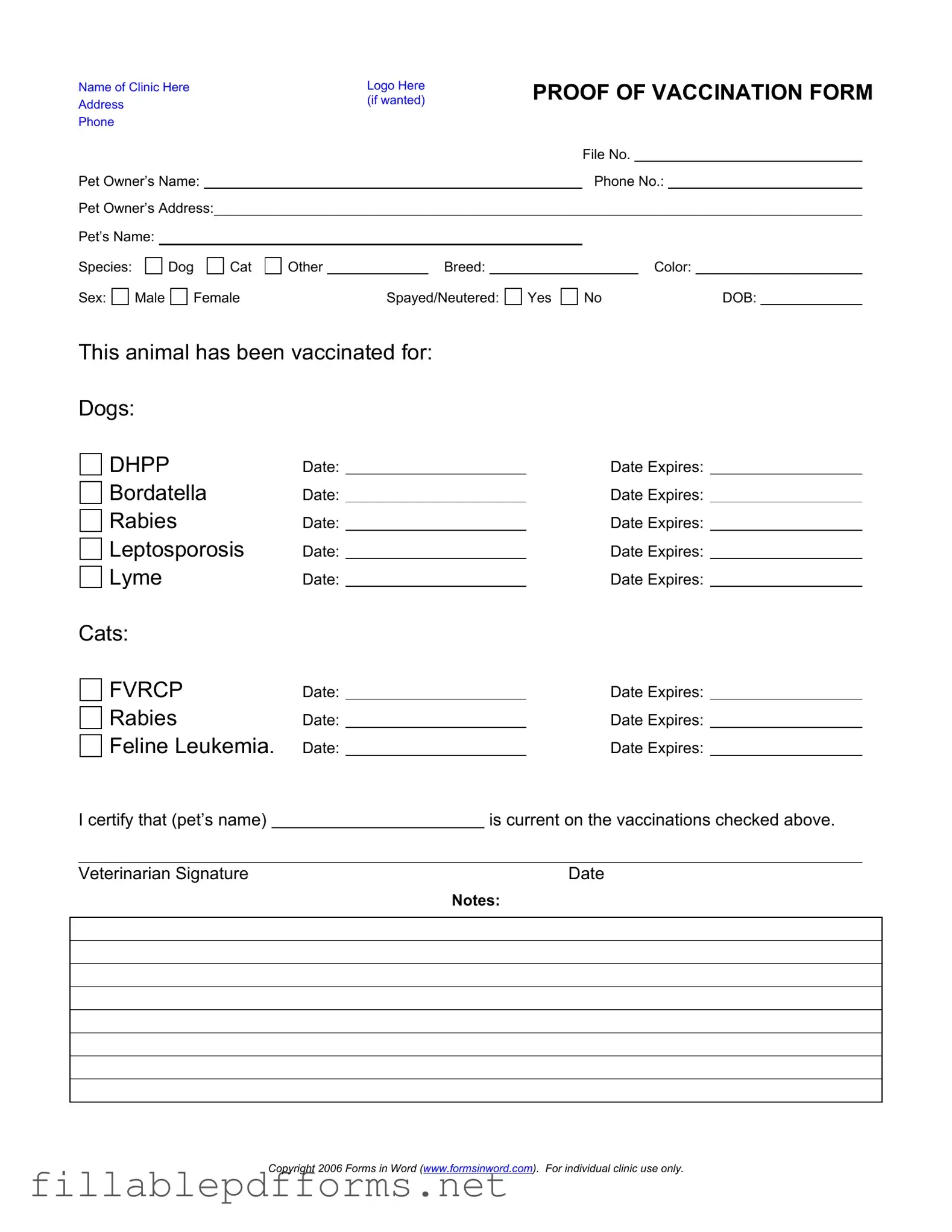Proof Of Vaccination Dog PDF Template
The Proof of Vaccination Dog form is an essential document that confirms a dog has received the necessary vaccinations to ensure its health and safety. This form typically includes information about the pet owner, the pet, and details of the vaccinations administered. Having this form on hand can be crucial for travel, boarding, or participation in dog-related events.
Launch Editor Here
